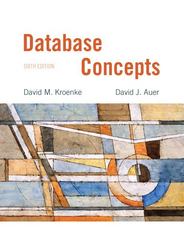Answered step by step
Verified Expert Solution
Question
1 Approved Answer
Examine the following case study of the RC Charter Company and answer the following questions: RC Charter Company operates a fleet of aircraft under the
Examine the following case study of the RC Charter Company and answer the following questions:
RC Charter Company operates a fleet of aircraft under the Federal Air Regulations FAR Part
air taxi or charter certificate, enforce by the FAA. The aircraft are available for air taxi
Charter operations within the United States and Canada.
Charter companies provide socalled unscheduled operations that is charter flights take place
only after a customer reserves the use of an aircraft at a designated date and time to fly to one or
more designated destinations; the aircraft transport passengers, cargo or some combination of
passenger and cargo. Of course, a customer can reserve many different charter trips during any
time frame. However for billing purposes, each charter trip is reserved by one and only one
customer. Some of RC Charter customers do not use the companys charter operations; instead,
they purchase fuel, use maintenance servoces, or use other RC Charter services. However, this
database design will focus on the charter operations only.
Each charter trip yields revenue for the RC Charter Company. This revenue is generated by the
charges a customer pays upon the completion of a flight. The charter flight charges are a function
of aircraft model used, distanc flown, waiting time, special customer requirements, and crew
expenses. The distance flown charges are computed by multiplying the roundtrip miles by the
models charge per mile. Roundtrip miles are based on the actual navigationbal path flown. The
sample route traced in Figure illustrates the procedure. Note that the num,ber of roundtrip
miles is calculated to be
Figure : Roundtrip Mile Determination
Depending on whether a customer has a RC Charter credot authorization, the customer may do
the following :
a Pay the entire charter bill upon the completion of charter flight.
b Pay a part of the charter bill and charge the remainder to the account.
c Charge the entire charter bill to the account. The charge amount might not exceed the
available limit
d Customers may pay all or part of the existing balance for previous charter trips. Such
payment maybe made at any time and are not neccessrily tied to a specific charter trip.
The charter mileage charge includes the expense of the pilots and crew required by
FAR However, if customers request additional crew not required by FAR those
customers are charged for th crew members on an hourly basis. The hourly crewmember
charge is based on each crew member's qualifications.
e The database must be able to handle crew assignments. Each charter trip requires the use
of an aircraft, and a crew flies each aircraft. The smaller, pistonengine charter aircraft
require a crew consisting of only a single pilot. All jets and other aircraft that have a
gross takeoff weight of at least pounds require a pilot and a copilot, while some
of the larger aircraft used to transport passengers may require flight attendants as part of
the crew. Some of the older aircraft require the assignments of a flight engineer, and
larger cargocarrying aircraft require the assignment of a loadmaster. In short, a crew can
consist of more than one person, and not all crew members are pilot.
f The charter flights aircraft waiting charges are computed by multiplying the hours
waited by the models hourly waiting charge. Crew expenses are limited to meals,
lodging and ground transportation.
The RC Charter database must be designed to generate a monthly summary of all charter
trips, expenses and revenue derived from the charter records. Such records are based on the
data that each pilot in command is required to record for each charter trip: trip dates and
times destinations aircraft number, pilot data and other crew data, distance flown, fuel
usage, and other data pertinent to the charter flight. Such charter data is then used to generate
monthly reports that detail revenue and operating cost information for customers, aircraft and
pilots. All pilots and other crew members are RC Charter Company employees, that is the
company does not use contract pilots and crews.
FAR Part operations are conducted under a strict set of requirements that govern the
licensing and training of crew members. For example, pilot must have earned either a
commercial license or an Airline Transport Pilot ATP license. Both licenses require
appropriate ratings, which are specific competency requirements. For example, conside the
following:
To operate a multiengine aircraft designed for takeoff and landings on land only, the
appropriate rating is MEL, or Multiengine Landplane. When a multiengine aircraft can
take off and land on water, the appropriate rating is MES or Multiengine Seaplane.
The instrument rating is based on a demonstrated ability to conduct all flight operations
with sole
Step by Step Solution
There are 3 Steps involved in it
Step: 1

Get Instant Access to Expert-Tailored Solutions
See step-by-step solutions with expert insights and AI powered tools for academic success
Step: 2

Step: 3

Ace Your Homework with AI
Get the answers you need in no time with our AI-driven, step-by-step assistance
Get Started


